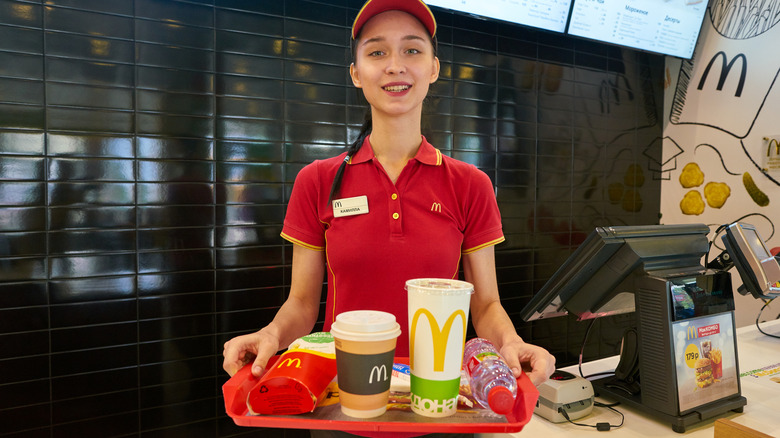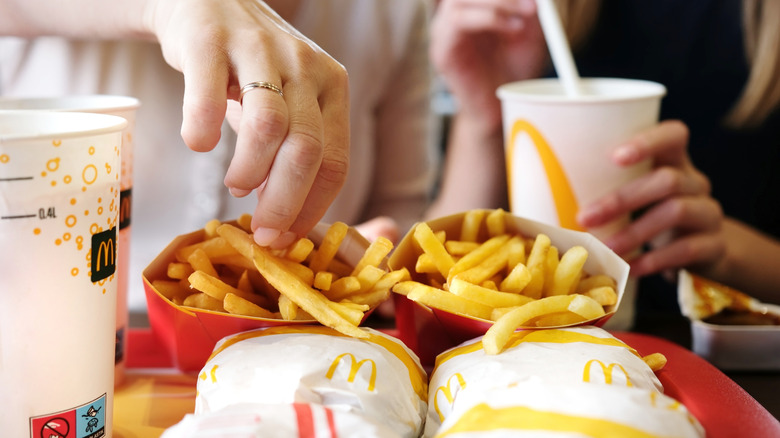How Many Restaurants You Need To Be A Chain
When we think of chain establishments, examples of fast food burger joints, popular barbecue restaurants, or certain taco eateries may spring to mind. But what makes one brand a chain while another is considered just a plain-old restaurant? To be considered a chain, does a restaurant have to operate a certain number of locations?
It's a simple question with a less-than-straightforward answer. What defines a chain seems to be largely a matter of perception, though some jurisdictions have legal definitions specifying how many locations constitute a chain, for regulatory purposes. New York City, for instance, has defined a chain as any restaurant with 15 or more sites. The Affordable Care Act implemented regulations governing food establishments with 20 or more locations, referring to them as chains. Farm Credit Canada defines a chain as a restaurant brand having more than three locations, all owned by the same company.
The most reliable definition is perhaps best captured by a company that is, in fact, a chain. Wayback Burgers, a fast food brand with hamburgers that are always fresh and never frozen, defines a chain as being two or more restaurants with the same name, the same goods, and the same governance. Job platform Indeed also categorizes a chain as having at least two locations. For my part, if I'm eating at a restaurant and it has a sister dining spot across town with the same name, I consider myself to be eating at a chain — two is all it takes.
Further defining what constitutes a restaurant chain
Because there's no universally agreed-upon definition of a chain in terms of numbers, some other criteria can help narrow things down. One definition cited by American Legal Publishing, for example, focuses more on other specific characteristics. "The term 'chain' means a set of establishments that share a common brand or that are characterized by standardized options for decor, marketing, packaging, products and services," the organization's website states.
In addition to consistent branding and wares, another attribute defining a chain is that its branches are owned by one parent company. When the branding is the same but the ownership isn't, that constitutes a franchise rather than a chain. Under this definition, a company can have both chains and franchises beneath its umbrella. McDonald's is a famous example of a brand that consists of both — some Mickey D's locations are owned by the corporate entity, making them chain locations, while others are owned and operated by independent franchisees.
White Castle, a famous fast food restaurant that got its start in Wichita, Kansas, is largely credited with becoming America's first fast-food hamburger chain. It started out by operating multiple food stands that were all owned by the original founders. To this day, in fact, White Castle remains a chain by the strictest definitions and has zero franchises. More than a century after it was founded, the fast food brand and its 300-plus restaurants remain family-owned and operated, with no independently owned locations.


